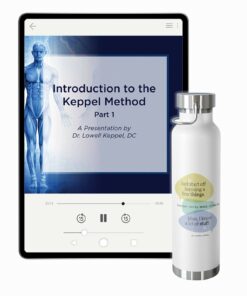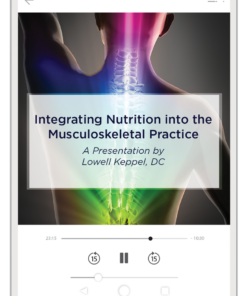Enjoy the latest installment of Dr. Lowell Keppel’s “Good to Know” series for practitioners.
Canker sores and cold sores—what’s the difference, and why do I care?
Canker sores, also called fever blisters, can appear on the gums, the tongue, the inside of the mouth, and even on the roof of the mouth. The precise cause of canker sores is not known, though research suggests that an outbreak can be traced to a variety of factors, including allergies, trauma to the tissues (from biting your cheek or tongue, for example), and vitamin and/or mineral deficiencies—specifically, a lack of B12, folate, iron, or zinc. Canker sores generally heal within a week or so on their own and are not contagious.
Cold sores, on the other hand, have a known culprit. They are caused by a virus known as herpes simplex 1 or herpes simplex 2, both of which you can get in your mouth. The Mayo Clinic explains that cold sores usually develop outside the mouth, on or around the lips, often forming lesions that blister and may crust over. Unlike canker sores, cold sores are contagious and can be spread through kissing and touching. Cold sores can take up to two to three weeks to heal and seldom leave a scar.
What can we as wholistic providers do to help our clients with this condition? And why should we be concerned about these lesions? It’s true that they are not life-threatening, but they are certainly painful and annoying. But there’s a bigger issue we must contend with: they are a sign of things to come. We should treat them as a warning of nutrient deficiency and an immune alliance that is heading for trouble.
In his seminal publication Vitamin News, Dr. Royal Lee states, “Cold sores and fever blisters are specific signs of low calcium in the tissues fluids. A vitamin F tablet or two with five grains of calcium lactate will produce a definite recession of the condition in two or three hours. A little vitamin D at this stage will invariably cause prompt recurrence.”
Cold sores, and any virus for that matter, can signal a lack of ionized calcium in the tissues. When ionized calcium is present in the tissues, these viruses have little power to create lesions on the body. Vitamin F moves the ionized calcium to the tissue to keep the viruses in check. Vitamin D is important for moving calcium from the gut to the bloodstream, but when in abundance it can draw calcium out of the tissues back to the bloodstream, thus leaving tissues vulnerable to the influence of the virus.
In the Lectures of Dr. Royal Lee, Volume II (disc 2, track 1), you can listen to Dr. Lee talk about the cause of canker sores on the tip of the tongue in his own words at the end of this post:
Question: What is the etiology, prevention, and cure of chronic canker sores on the tip of the tongue?
Dr. Lee’s answer: Canker sores have the same cause as polio. Lack of diffusible calcium in the body. And if you get some calcium lactate and some vitamin F, you probably won’t have any more trouble. Once in a while a patient fails to respond. He may have some other barriers to calcium assimilation. It might be another vitamin because there’s half a dozen involved. One of them is pyridoxine or vitamin B6. At any rate that’s one experiment you can make and if that doesn’t work then you’ll be lucky to find a doctor who can figure out the biochemical problem. The next thing to do is get a blood test and have some physician look it over.
There is something else of note in Conversations in Nutrition by Dr. Royal Lee and John Courtney—the Robin to Dr. Lee’s Batman. Here John Courtney educates the sales team of 1963:
“Another thing that you will find is these canker sores that you get on the inside of your mouth. This is tissue calcium starvation. Canker sores are a virus. Once you get them, you will have them for the rest of your life, but if your tissue calcium is sufficiently high, they won’t bother you. It is not too bad to have them because it shows your calcium threshold. As soon as you your calcium goes down, they pop out and you know you need Calcium Lactate. So much for that.”
Understanding when the body is showing signs of nutritional status can help you detect problems before they get out of hand.
Calcium metabolism is hugely important. After all, it is the number one mineral in the body. A simple test called the calcium cuff test gives you information that lets you know if ionized calcium is getting into the tissues where it can do its work.
I talk about this test in my e-learning videos from Selene River Press, but here is brief summary:
- Using a blood pressure cuff, compress the calf muscle until the feeling of pressure changes to pain.
- Note the amount of pressure.
- The ideal is 240 mmHg. Anything over 200 mmHg is acceptable.
- If below 200mmHg, have patient chew supplement and repeat test until you find the supplement that raises mmHg to acceptable levels.
Now you must determine: Is there available calcium? Is the calcium moving to the blood (vitamin D or parathyroid hormone)? Is there vitamin F (fatty acids) to move the calcium to the tissues?
Understanding the little signs the body shows regarding vitamin and mineral deficiency will help you and your patients.
Remember, results refer!
Images from iStock/blanscape (main), DariaRen (post).
Audio Player





